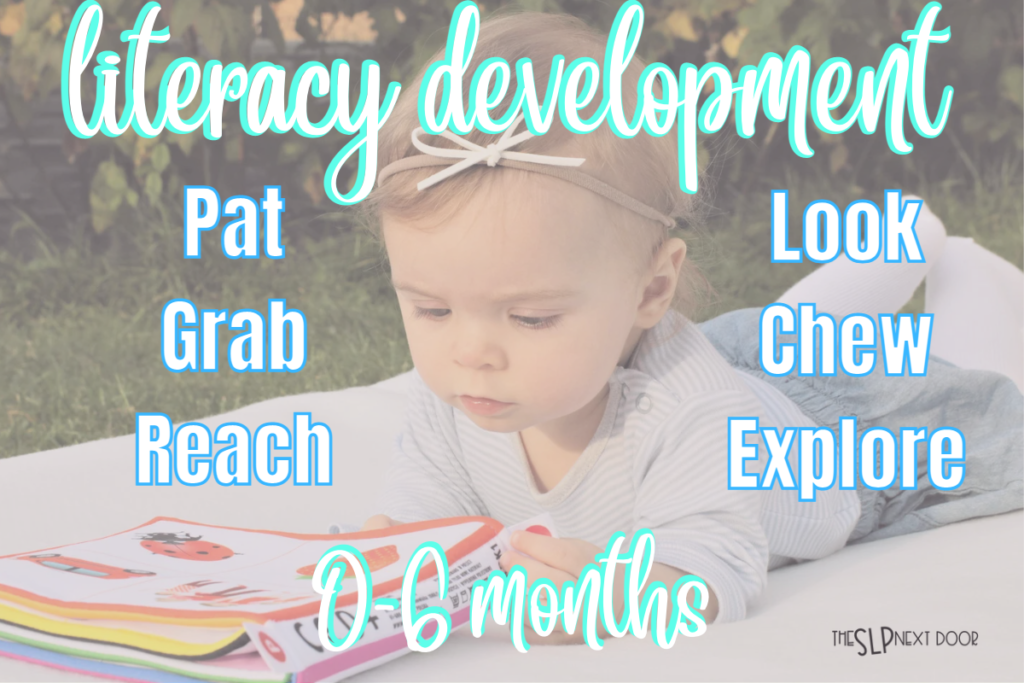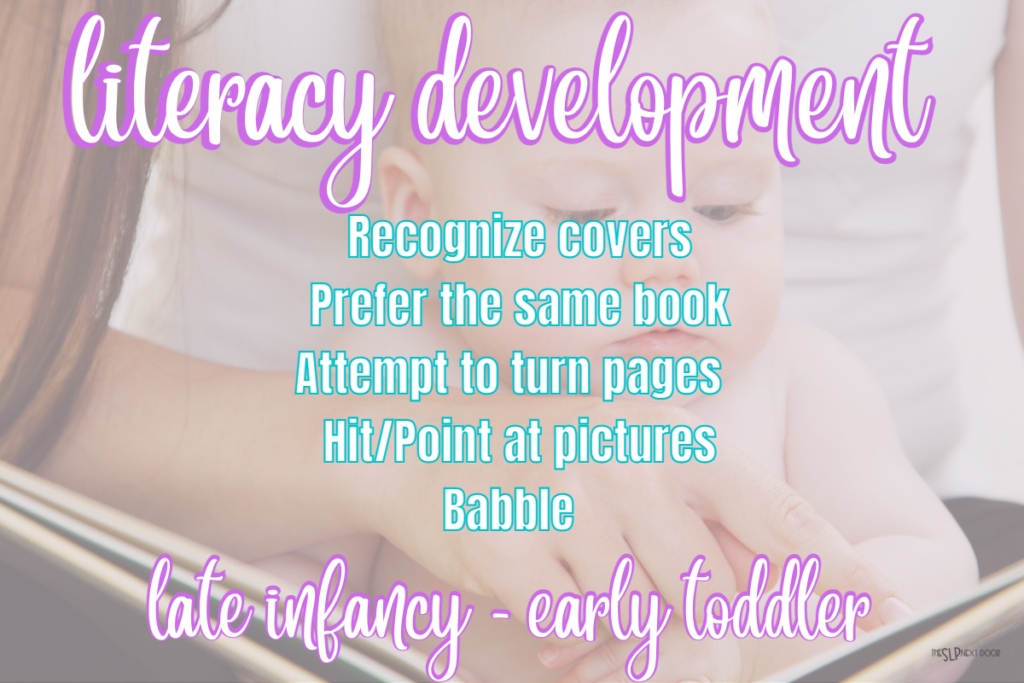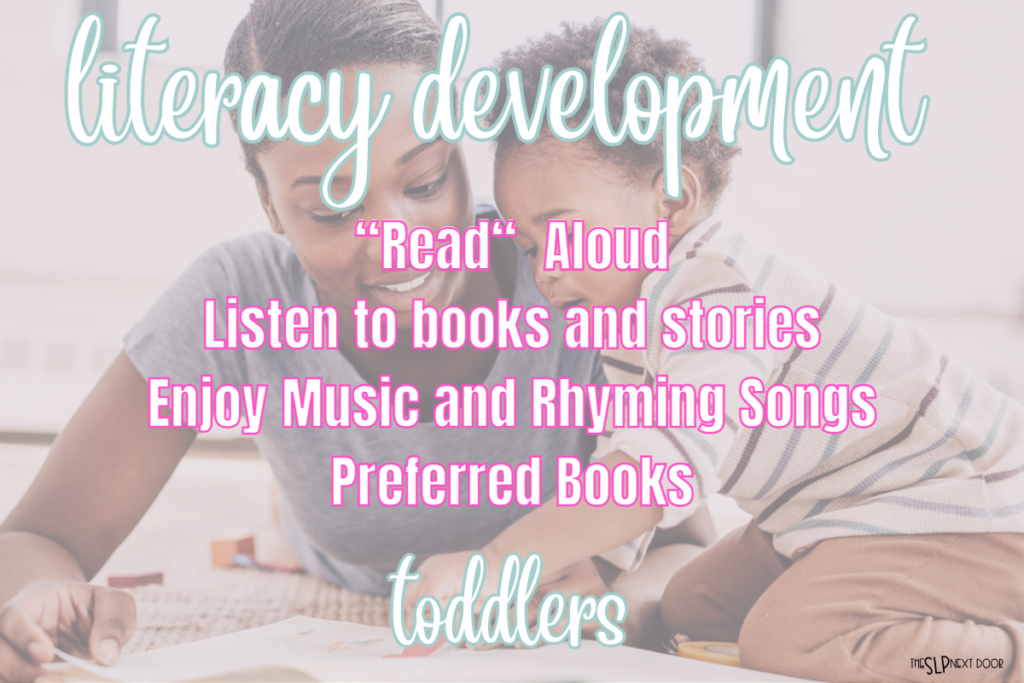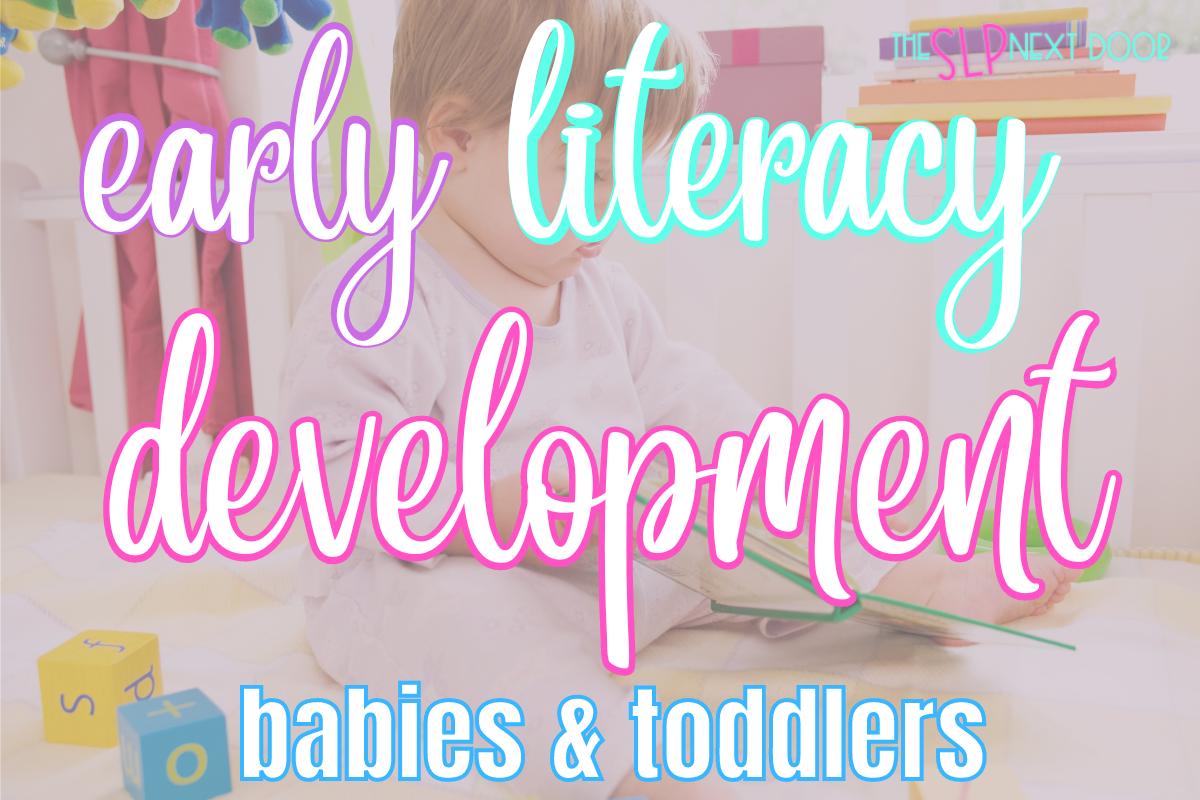Literacy skills are how we read and write. We often think of preschool (3-4 years and up) when thinking about literacy development. But, did you know early literacy development actually starts in infancy? Exposing infants and toddlers to activities involving reading and books consistently will greatly impact their later language and literacy development.

Early Literacy Skills
In infants, early literacy development looks like this: a baby will pat, reach for, or chew on books as they explore their environment. They may babble while looking at pictures.
As infants develop into toddlers, these skills will become more refined. Babbling develops into word approximations and later, individual words. They will begin to point at pictures and identify familiar objects.
Literacy in Toddlers
Early literacy development in toddlers is a continued growth in skills developed in infancy. Babbling develops into word approximations and individual words. Toddlers will begin to point at pictures and identify familiar objects. They will even “read” their favorite or familiar stories. Even if you can’t understand what they are saying- engage in verbal exchanges as they “read” to you. This not only encourages literacy development in toddlers but will also create opportunities for conversational exchange.

Additionally, toddlers will identify familiar items and objects in stories, begin to understand actions and prepositions, and will begin to answer basic questions about stories and events. They recognize their favorite [or familiar] books and “read” them aloud. They love music and enjoy rhyming and rhythmic books and songs. As parents and therapists, we probably even have their favorite books memorized too!
Early Literacy Activities
Even by reading the same book multiple times, you’re still encouraging the development of early literacy skills. Other activities for literacy include dance parties with fun toddler songs and rhymes. My favorite videos for early language development: Super Simple Songs – you can find them on Youtube and Amazon Prime Music! Ms. Rachel’s Songs for Littles. Another way to implement early literacy development is by pointing out letters, logos, and familiar words throughout the day. The important thing to keep in mind is to keep these types of activities consistent in daily routines! (also, i’m not an affiliate for either of those, I just love them!)
Pretty interesting, right? Doing the research on baby and toddler development has definitely shown me soooo much. It’s amazing how all of the developmental stages babies and toddlers progress through work together to create future amazing grown-ups! Everything they do has an impact on their future self.

If you want to know more about the importance of reading with babies and toddlers and early literacy development, check out my guide to Reading with Babies and Toddlers! This research-based printable book is filled with the benefits of reading to children from infancy!
You can find information about:
- The Benefits of Reading
- Choosing Books based on a children’s developmental milestones
- Strategies and tips for reading with children
- Shared Storybook reading as a method of early intervention for language development in babies
- Considerations for reading (cultural considerations, developmental considerations, and personal considerations)
- Reading to children without using a book
- Early literacy development in babies and toddlers
- Average vs. Milestone
- Child Appropriate responses to reading aloud
This resource also has multiple printable handouts for quick reference and easy ways to help parents understand the benefits of reading with their babies and toddlers!



6 Responses